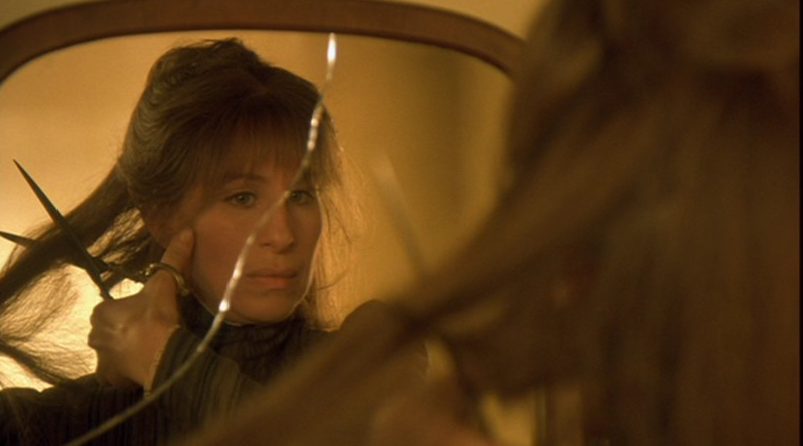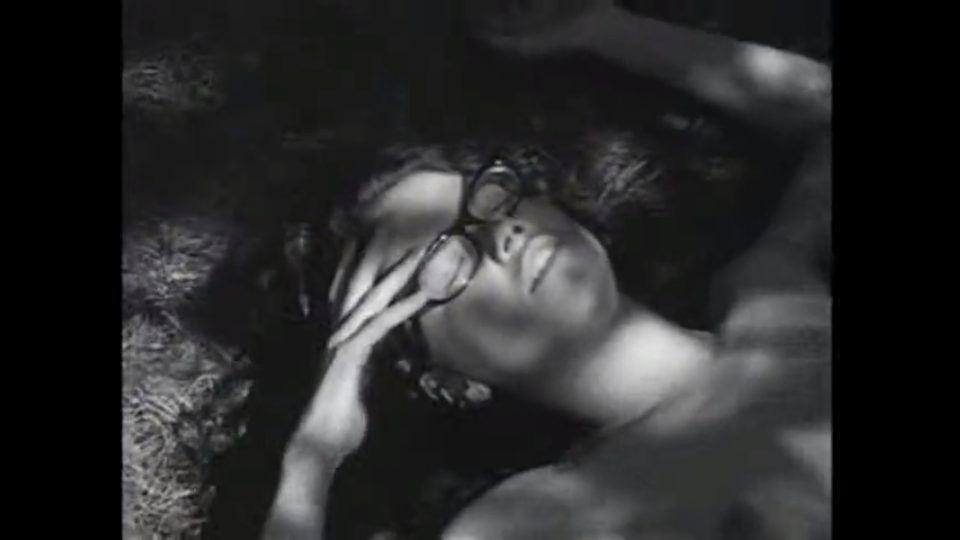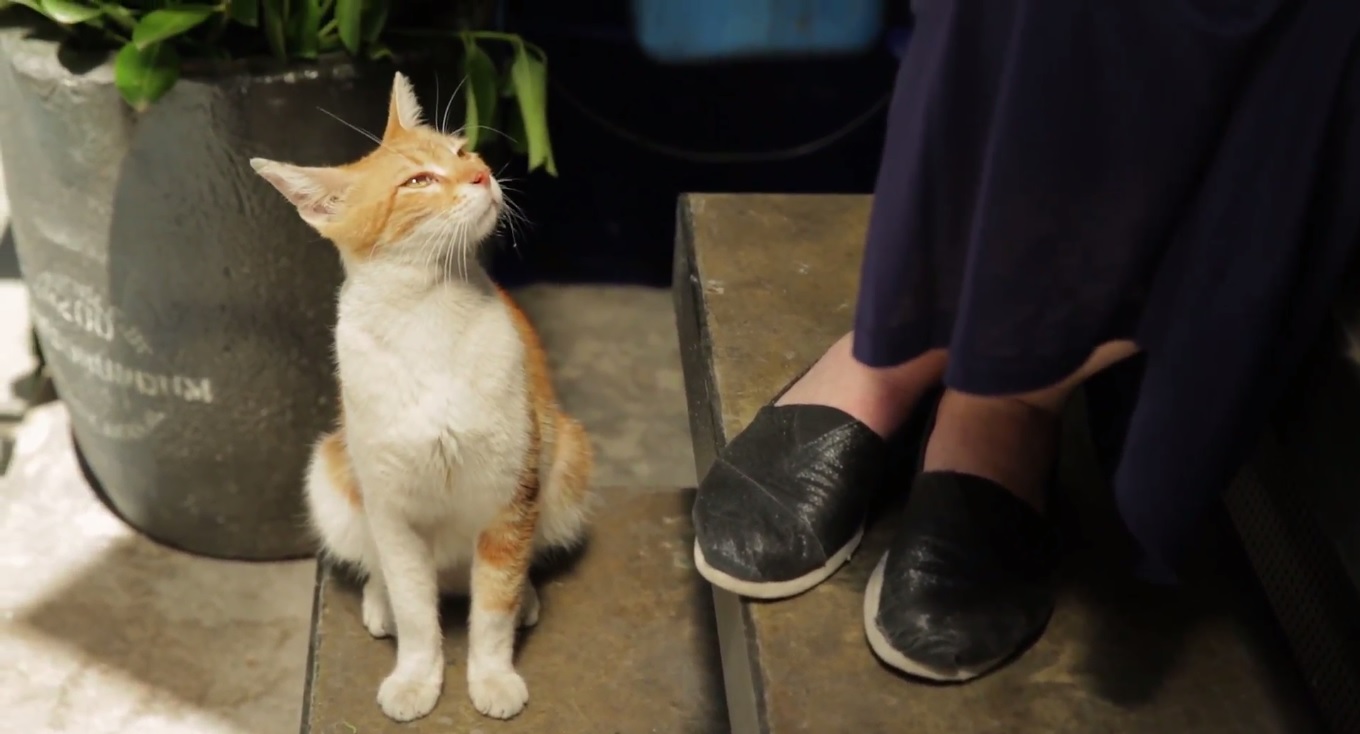
“Everything is beautiful when you look at it with love.” The statement comes a third of the way into Kedi—Ceyda Torun’s 2016 documentary about Istanbul street cats—as an older man describes a mindful, open-hearted approach to life: seek happiness in small things (a cat, a flower) and “all the world will be yours.” This philosophy seemingly guides the film, which unfolds as a series of blue-skied vignettes detailing the lives of Istanbul’s petite, furry denizens narrated by the gentle human co-habitants who look upon them alternately as companions, wards, spiritual guides and talismans. A dainty, mesmerizing marimba and glockenspiel-laced score, interwoven with classic Turkish folk and pop songs, bolsters the impression that Kedi should, in the director’s own words, “feel like you just had a cat snuggle up on your lap unexpectedly and purr fervently for a good long time.”
Yet this is also a film with profoundly melancholic undertones, one that returns again and again to the subjects of death and uncertainty, in one instance lingering for a full minute on a man cradling a dying kitten in his hands. It’s a film set in a city that has, in recent years, suffered multiple bombings and attacks, witnessed an environmentally conscious grassroots uprising followed by a repressive governmental response and endured a failed, bloody military coup.
Yet this is also a film with profoundly melancholic undertones, one that returns again and again to the subjects of death and uncertainty…
And so perhaps the more-or-less explicit themes of interdependence and fragility woven in among Kedi’s lighter-hearted narratives are an attempt to apply a loving lens to a bleak reality—a gentle, wet-nosed nudge reminding audiences of their capacity to nurture. After all, as one character wisely warns: “People who don’t love animals can’t love people either.”
Aside from the occasional flock of pigeons, animals are often excised from onscreen urban landscapes in a way that chillingly heralds our current anthropocenic era, where “humanity’s impact on the Earth is now so profound that [it has ushered in] a new geological epoch.”[i] Kedi gently pushes back against this self-fulfilling trope, reminding us that humans are one of billions of species to have existed on this planet. Its opening text firmly establishes cats as conscious inhabitants of the city: “Cats have lived in what is now Istanbul for thousands of years. They have seen empires rise and fall and the city shrink and grow.” A sprawling, God’s-eye view of red rooftops, the Galata stone tower and the Bosphorus introduces the film, criss-crossed with white gulls. Tiny feline bodies begin to appear in subsequent shots—wandering through narrow streets, tucked into balconies, padding brazenly over roof tiles—as organic to the space as their slightly larger human counterparts.

Kedi features a broad and varied cast of characters, including many humans, but the introduction of its first star sets a deliberate tone. The soundtrack shifts from its original score to a song for the first time: Barış Manço’s 1981 folk-rock hit Arkadaşım Eşşek, a loving ode to a “donkey friend” that laments humankind’s alienation from animals and nature. Applying a day-in-the-life approach, a ground-level camera shadows a slim marmalade cat as she trots purposefully down the sidewalk, pokes her nose into a cup of water and a plastic bag next to a fruit stand, munches on scraps, mews boldly and paws at the knees of headless humans seated outside cafés, and eventually carts a bready treat home in her mouth, where, after the door is politely opened for her by another headless human, she deposits it in front of her litter of kittens. Only at this point does the camera shift from the cat’s perspective to that of the owner of the store where she resides, who speaks fondly of her: “She’s a stubborn character, really strong-willed. She has personality.”
The woman, whose name we never learn (none of the humans in Kedi are named, while many of the cats are), is the first of many to remark on the ‘personality’ of cats. “They all have personalities, like people,” a woman in a market says. “Some are discreet, some will tell you all their troubles.” Bengu, a plump tabby who uses a shop storeroom as her pied-à-terre, is described by the men who run the shop as “delicate, sensitive and jealous.” Psykopath, a local black-and-white terror, is known to be “possessive” of her “husband.” Gamsız, a blithesome scamp who regularly gets into scrapes, derives his name from his perpetually carefree attitude. One man speculates that cats are aware of God’s existence. While Kedi maintains a certain agnosticism about the extent of cats’ similarities to our own species, the film clearly values these human attempts to connect and empathize with other creatures.
During 2017’s hurricane Harvey, a meme circulated showing a photo of a cat swimming through Houston floodwaters, its face contorted into a snarl. Onto this poor, terrified creature, struggling to stay alive, the internet projected distinctly human fantasies of badass don’t-give-a-fuckism, a cruel irony given humankind’s role in climate collapse. Such are the pitfalls of personification: efforts to relate become efforts to assimilate, to erase difference.
Such are the pitfalls of personification: efforts to relate become efforts to assimilate, to erase difference.
Kedi offers an alternative to this narrative when one woman describes having relationships with cats as similar to “making friends with aliens. You make contact with a very different life form, open a line of communication with one another and start a dialogue.” She speaks over a series of close-ups of high-cheekboned, long-whiskered faces, their expressions calm but inscrutable.
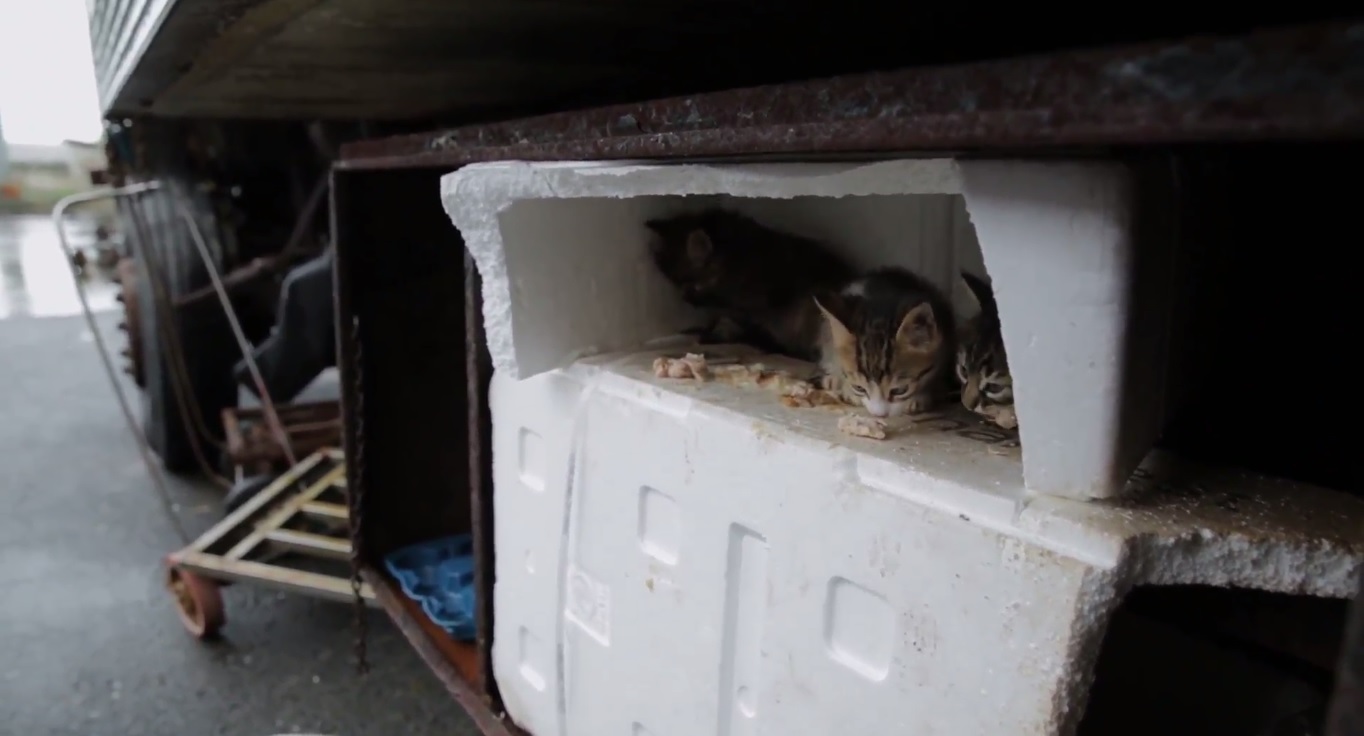
Cats were, in fact, once alien to Istanbul: a short segment in the documentary describes how they arrived in ships from around the world during the Ottoman era, and, as the first Ottoman sewers were built, were welcomed into homes to keep giant rats at bay. A harbour restaurant’s tuxedo cat continues this tradition, hunting beneath the sidewalks at night. He is a “little lion” according to a staff member who, in a striking display of empathy towards a species reviled by his industry, says of the rats: “Because we’re people, we don’t give them space to live.” The problem of human-animal cohabitation preoccupies many of Kedi’s interviewees; surrounded by canvases smeared blood-red, an artist observes: “Cats are satisfied with their existence… but we always want more. That mentality poisons us and destroys everything. And maybe, in the near future, we may no longer see cats on these streets.”
At the moment, the opposite is true. Kedi is haunted by an overabundance of kittens: crawling out of trash and debris, discovered in nooks and crannies, abandoned, helpless, mewling. Near the harbour, an orphaned litter of newborns are totally dependent on a fisherman who comes every day to feed them milk through a dropper: “Neglect them for a few days and they’ll die.” After two women in a marketplace find seven kittens in a cardboard box, they express concern about the cats’ welfare in light of forthcoming development in their neighbourhood: “If this area gets demolished…they won’t have anyone.” Over images of mirrored skyscrapers, another local man laments the loss of orchards and green space: “It all changed over the last five years…. It used to be all green here. When these buildings went up, it all disappeared—no nature left.” The only frames filled by grass and trees appear in a scene filmed in a cemetery.
Although Torun’s documentary avoids any explicit references to politics and current events, this eulogy for nature subtly conjures the Gezi Park protests of 2013: what began in Istanbul as a sit-in by environmentalists protesting plans to develop the park turned into a months-long wave of massive demonstrations against government authoritarianism that spread across the country, resulting in multiple civilian deaths and thousands of injuries and arrests. The government’s repression of dissent has only grown stronger in the aftermath of 2016’s failed military coup, so it is unsurprising that a sense of weariness and resignation colours many of Kedi’s testimonies.
The government’s repression of dissent has only grown stronger in the aftermath of 2016’s failed military coup, so it is unsurprising that a sense of weariness and resignation colours many of Kedi’s testimonies.
And although she applies a light touch throughout, Torun devotes a noticeable portion of her film to contemplations of loss, death and grief. A woman who prepares twenty pounds of chicken a day for the cats in her neighbourhood mentions in an offhand way that five local cats have died in the previous week: “It’s always cancer. We eat and drink the same food and water. It happens to us, it happens to them.” Her home is full of well-fed cats and colourful tchotchkes—dozens of cloth dolls dangle from the ceiling as if to ward off sadness. As she turns the pages of a photo album showing her first calico love, she admits: “I accept death as a reality, but I have difficulty with the longing.” Another man recalls burying family cats in a backyard cemetery “with great ceremony” as a child: “We learned that something you love can one day cease to exist.”
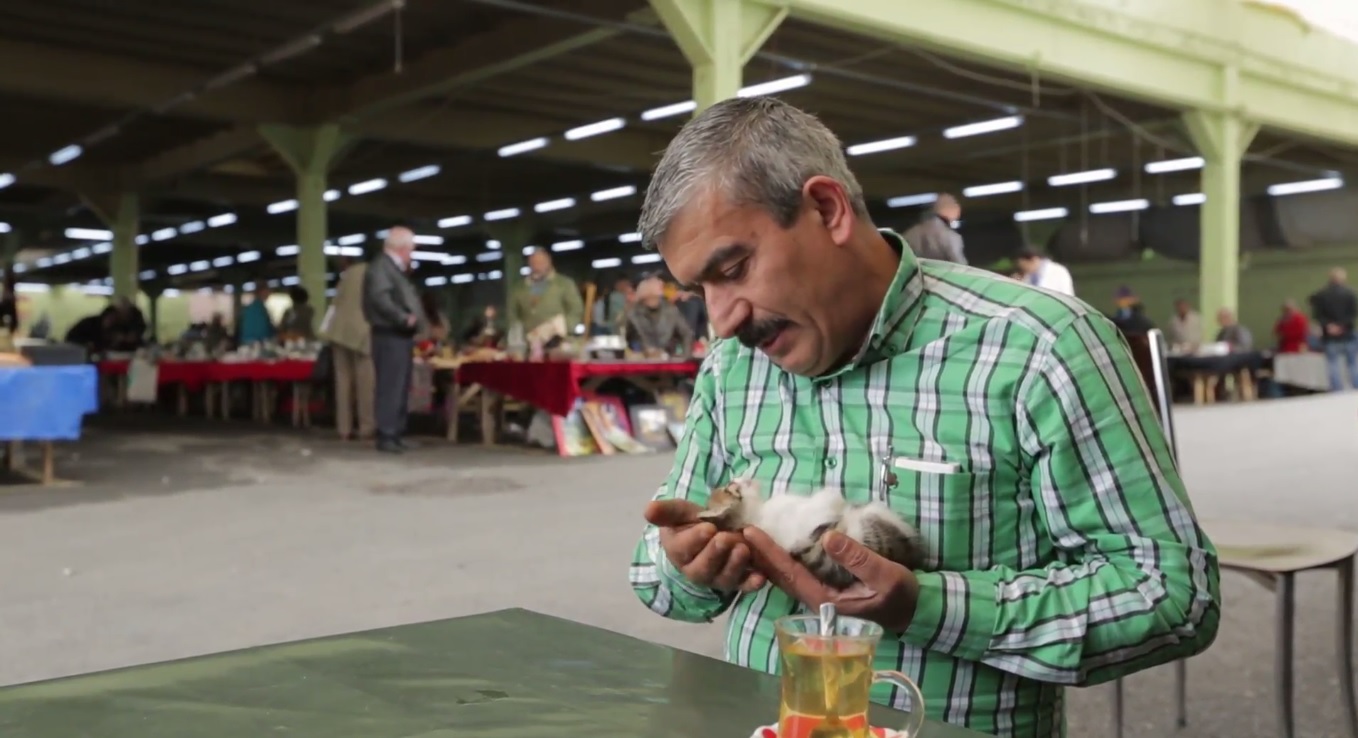
“Is it dead, I wonder?” the man in the marketplace asks sadly, as he gently shakes the limp body of a kitten someone has brought him. Kedi doesn’t answer the question in so many words; the camera accompanies the man in a taxi as he steadies his cupped hands under the kitten, who eventually disappears into a veterinary operating room, and the scene shifts to one of kittens frolicking on ancient, overturned headstones. A couple who run a bakery speak of the running tab they and others in their neighbourhood have with a local vet, and of “the people cats choose.” Again and again, the humans of Kedi express a profound sense of responsibility towards their feline co-habitants. Some view it as a calling, like the grizzled fisherman who began caring for abandoned kittens after he lost his boat in a storm and a cat led him to a lost wallet containing the exact amount of money he needed. Another man, who began feeding and tending to large numbers of cats after experiencing a nervous breakdown, says his friends don’t understand his devotion: “They think God will provide for them. Sure, but I’m the middleman.”
The same man, as he carefully treats a kitten’s eye infection with antibiotic drops, admits: “Doing this cured me… Before, I couldn’t talk or laugh, but let’s just say they make you fall in love again.” The woman from the gaily decorated house expresses a similar interdependence, explaining that her therapist believes her efforts to care for cats are an attempt to heal her own wounds: “They must be so deeply rooted to have not healed by now.” From imminent mass-extinction to global warming’s acceleration, it grows more difficult by the day to conceive of a way for humankind to heal the wounds we have inflicted on the home we share. One of many contributing factors is surely our tendency to celebrate, seek comfort in and prioritise spontaneous individual acts of kindness and heroism over steadfast collective action and sacrifice. “Our concerns for street animals and our concerns for people are completely related to one another,” a woman says towards the end of Kedi. “If we can learn to live together again, maybe we’ll solve our own problems as we solve theirs. In fact, I’m sure that we would regain our fading sense of humour and rekindle our slowly dying joy for life,”—an appeal to hope remarkable for its gloom.
Narratives of feline resilience act as a balm against the human anxiety chafing each frame. “I first admired cats the way I admired superheroes,” a man says over a series of triumphant and death-defying leaps, scrambles and graceful landings. “Having nine lives, being able to land on all fours. We land on two and they snap like twigs.” Gamsiz, the handsome, happy-go-lucky tuxedo cat, continues to merrily prowl his neighbourhood despite countless hospitalizations, in one scene racing up a tree and flying from branch to windowsill as a cat below looks on, seemingly in awe. There is also a certain comfort to be found in Gamsiz’s ruthless territoriality, exhibited in a prolonged sequence featuring intimidation, stalking and snarling fights; beyond serving as a display of tenacity, these vicious moments offer some absolution for our own violent tendencies. We are, after all, just mammals muddling along. Or, as one man puts it: “Dogs think people are God; cats know better.”
In a final, post-apocalyptic scene, the kindly, weathered fisherman sets out in his tiny boat accompanied by two cats and one dog. “God says ‘I test people.’ God brings us closer to him in different ways. For me, it was these animals. I guess I was worthy of his love.” Perhaps, in the end, individual expressions of kindness and compassion are all we’re left with. There is something profoundly comforting about watching a middle-aged man gently stroking a plump, purring cat: “She loves to be loved.” Certainly, for cat lovers, a sense of well-being accompanies images of paws and furry bellies, of mischievous and willful little faces. If, as Torun hopes, the viewer senses a cat snuggling unexpectedly onto their lap as the film unfolds, it may ultimately be the type of cat who sniffs out dying nursing-home residents and provides peaceful companionship during their final hours. In the meantime: “A cat meowing at you—at your feet, looking up at you—is life smiling at you. It’s life reminding you you’re alive.”


